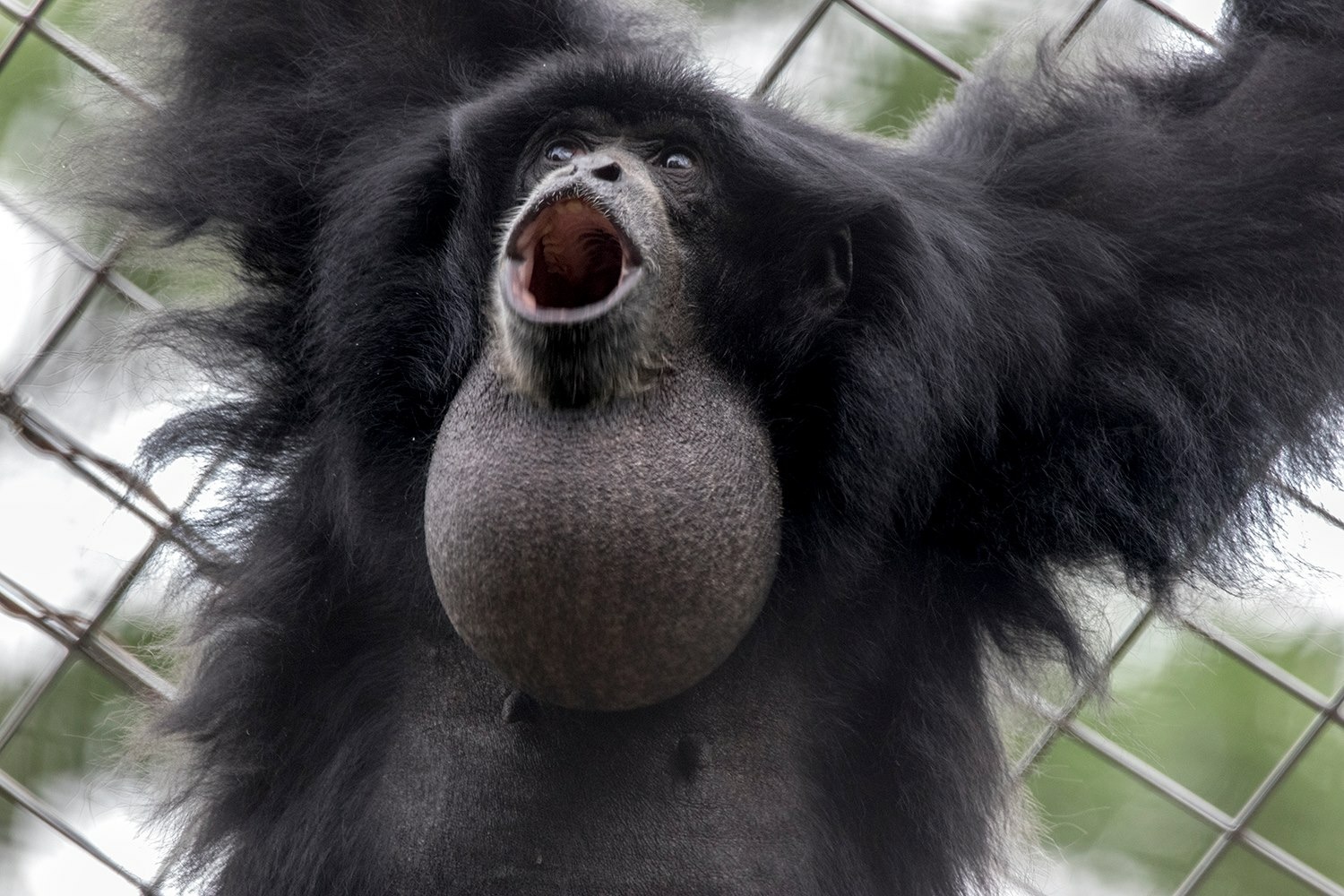What is a gibbon?
Gibbons are diurnal small apes that live in Southeast Asia. There are 20 recognized species of gibbons in four genera.
Range
Tropical and sub-tropical forests in China, India, Bangladesh, Myanmar, Thailand, Cambodia, Vietnam, Malaysia, and Indonesia.
Physical Characteristics
Gibbons are the smallest of the apes and are gracile in body form compared to great ape species. Lar gibbon weights range between 4.4-7.6 kg with a height between 42-59 cm. White-cheeked gibbons average 5.6-5.8 kg with a height ranging between 46-64 cm. Siamangs range between 10.7-11.9 kg with a height of 74-89 cm. Their arms are considerably longer than their legs.
All gibbons have ischial callosities, areas of thickened skin on their buttocks that allow them to sit in trees more comfortably. Siamangs are the only gibbon species to have an inflatable throat sac to amplify their territorial calls. Both males and females have long canines to help in defense of their territories.
Large canines in both sexes, Gibbon Conservation Center
Siamang throat sac, Smithsonian National Zoo
Sexual dimorphism
Gibbons demonstrate little sexual dimorphism based on size. However, several species exhibit sexual dichromatism, the expression of different pelage colors and patterns for males and females.
Sexual dichromatism in white-cheeked gibbons. Oregon Zoo
Locomotion
Their primary method of locomotion is brachiation - swinging from branch to branch using only their arms. They have specialized wrist joints to aid in this type of movement. Gibbons are also adept at bipedal movement and will often hold their arms above their heads for balance. Their arms are so long that they are unable to walk quadrupedally. Gibbons are considered to be the fastest and most agile, non-flying arboreal mammal.
Brachiation
Bipedal locomotion, Disney’s Animal Kingdom
Social Behavior
Gibbons typically live in family groups that consist of a socially-bonded pair and their offspring. They are extremely territorial. Each species has a unique call or song that helps in social bonding and serves as a territorial display. Male and female parts of the song are usually distinct. Gibbons use social grooming to solidify social relationships.
Play, Disney’s Animal Kingdom
Grooming, Denver Zoo
Diet
Gibbons are frugivorous, though they also consume leaves, insects, and flowers.
Literature survey of wild gibbon diets
Reproduction
Gibbons typically produce one offspring at a time, though twins are possible. Gestation is 200-210 days. Females are the primary caregivers for infants. With siamangs, males take on significant parenting responsibilities when the infant is older. Offspring are typically spaced about 2-3 years apart. Offspring will disperse from their natal groups between 8-10 years of age, though they are believed to be sexually mature up to two years before that point.









